Abstract
OBJECTIVES: To determine whether women prefer male or female physicians for gynecologic examinations, whether they want a third person present during examinations, and what behaviour physicians and third persons should exhibit. We also sought to determine whether women had experienced any unprofessional behaviour from doctors. DESIGN: Cross-sectional, 17-item questionnaire. SETTING: Two Saskatchewan family practices: one rural (Melfort), one urban (Saskatoon). PARTICIPANTS: All women 18 years old and older who visited their family physicians' offices between February and April 1993. MAIN OUTCOME MEASURES: Patient preferences regarding physician behaviour and any perceived unprofessional behaviour. RESULTS: Of 350 questionnaires, 336 were completed correctly. Responses indicated that 51% did not mind whether the physician was male or female, but 43% preferred female doctors. When being examined by a male physician, 62% wanted a third person present; only 30% wanted that if the physician was female. Of all women, 42% wanted the opportunity to choose whether a third person was present every time and another 19% only for the first examination by a new doctor. Supportive behaviours were indicated. "Unprofessional" conduct had been experienced by 8% of respondents. CONCLUSIONS: Many women do not mind whether they are examined by male or female doctors. Many prefer having a third person present when the examining physician is a man. Some want the opportunity to choose whether a chaperone is present.
Full text
PDF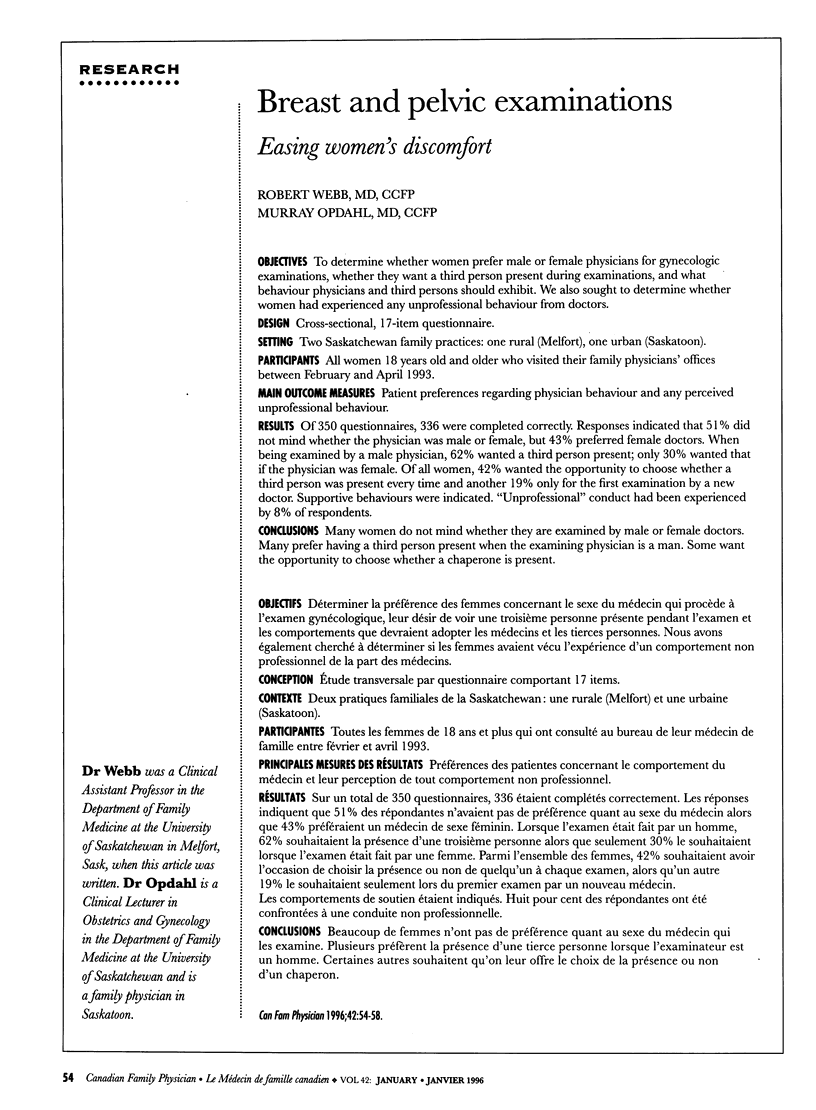
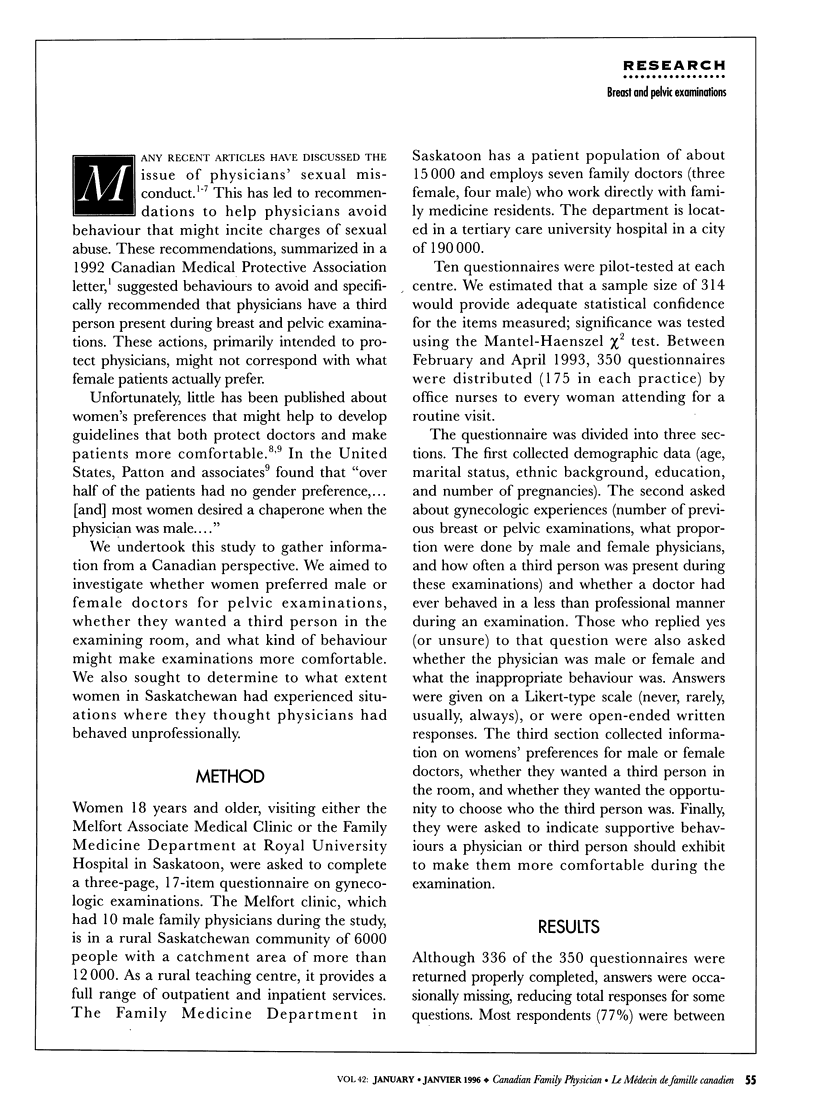
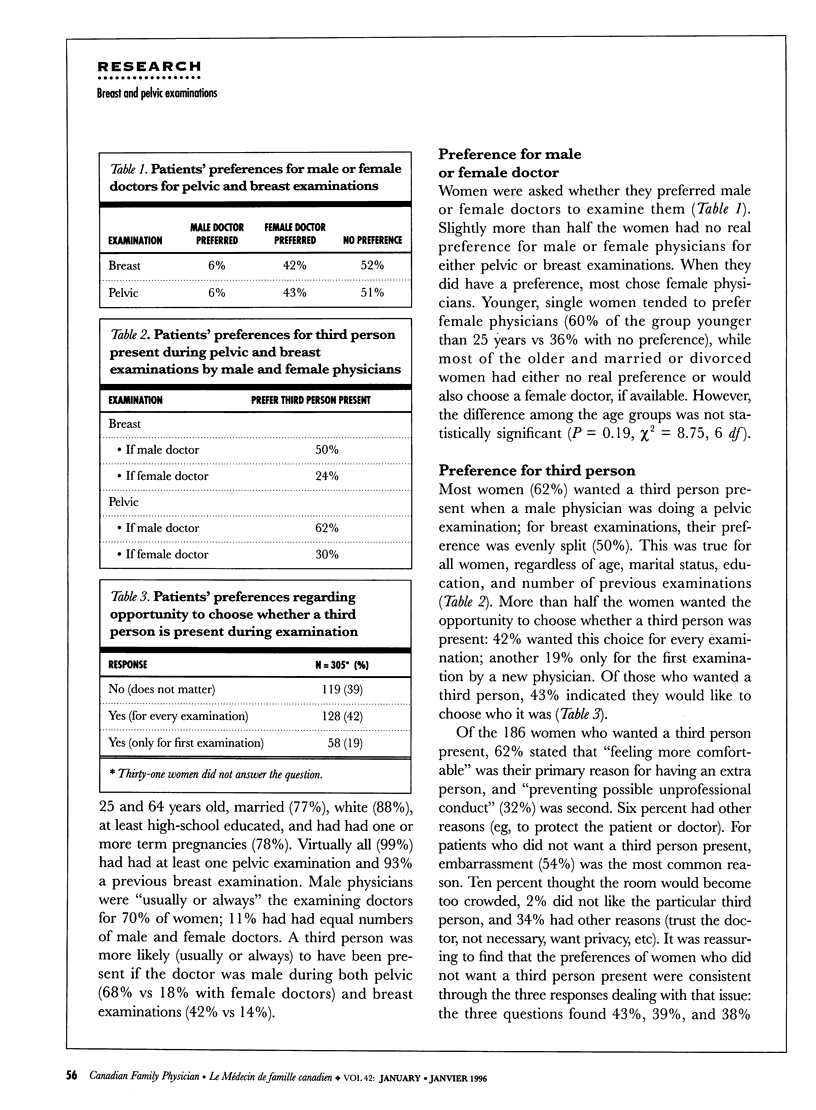
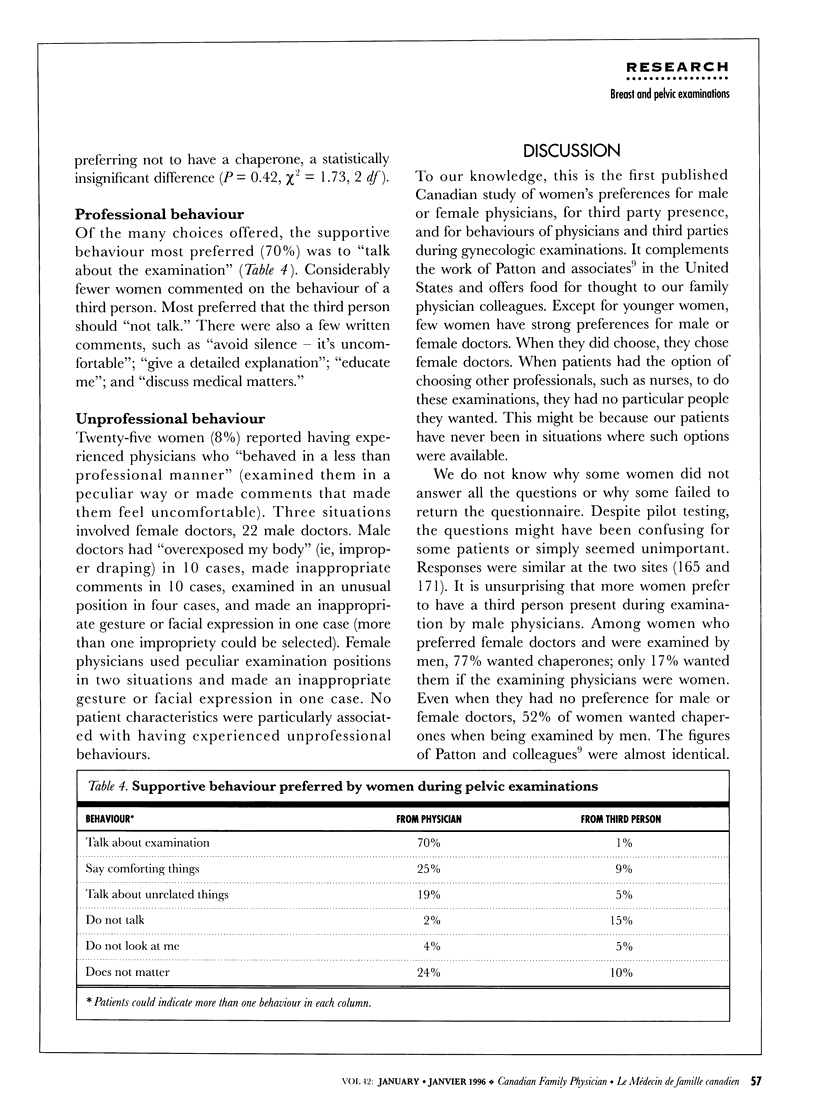
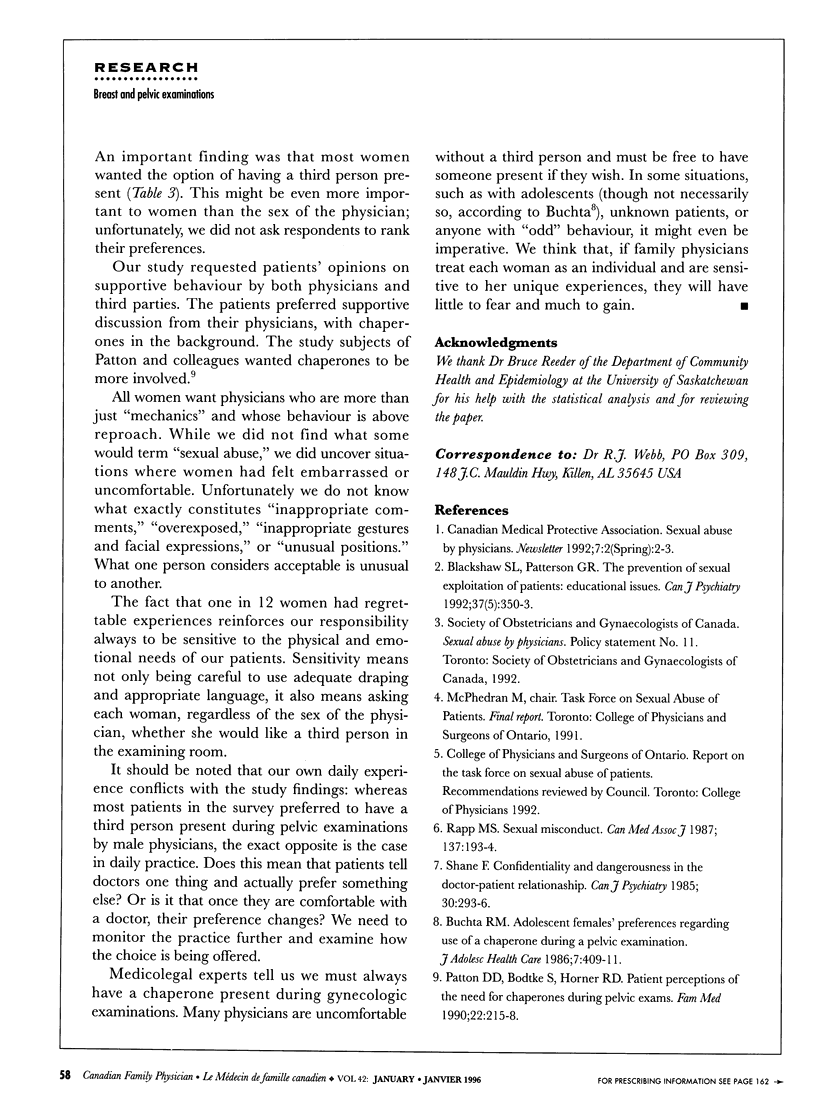
Selected References
These references are in PubMed. This may not be the complete list of references from this article.
- Blackshaw S. L., Patterson P. G. The prevention of sexual exploitation of patients: educational issues. Can J Psychiatry. 1992 Jun;37(5):350–357. doi: 10.1177/070674379203700509. [DOI] [PubMed] [Google Scholar]
- Buchta R. M. Adolescent females' preferences regarding use of a chaperone during a pelvic examination. Observations from a private-practice setting. J Adolesc Health Care. 1986 Nov;7(6):409–411. doi: 10.1016/s0197-0070(86)80244-3. [DOI] [PubMed] [Google Scholar]
- Patton D. D., Bodtke S., Horner R. D. Patient perceptions of the need for chaperones during pelvic exams. Fam Med. 1990 May-Jun;22(3):215–218. [PubMed] [Google Scholar]
- Rapp M. S. Sexual misconduct. CMAJ. 1987 Aug 1;137(3):193–194. [PMC free article] [PubMed] [Google Scholar]
- Shane F. Confidentiality and dangerousness in the doctor-patient relationship. The position of the Canadian Psychiatric Association. Can J Psychiatry. 1985 Jun;30(4):293–301. doi: 10.1177/070674378503000416. [DOI] [PubMed] [Google Scholar]


